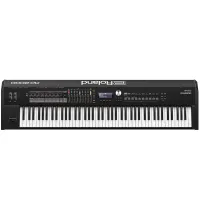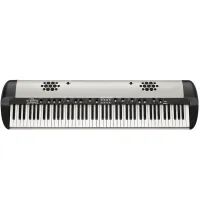MusicRadar Verdict
We are absolutely in love with this keyboard, thanks to the unbelievable playability and quality of its makeup. If you’re a pianist who yearns for a better electric playing experience, your new piano may have just arrived!
Pros
- +
Incredibly engaging playing experience, thanks to the exceptional weighted keybed.
- +
Loaded with tons of samples that sound great, right out of the box.
- +
The synth section provides plenty of bolstering content.
- +
Beautifully built; handmade in Sweden.
Cons
- -
No pitch and mod wheel controls.
- -
Keyboard split points are dictated by Nord.
MusicRadar's got your back
What is it?
We’ll be honest, when we first heard about the Nord line of Pianos (some years back) we weren’t entirely sure who Nord was trying to attract. It already had a fantastic reputation in the Stage piano line, so what’s the rationale?
There are many similarities between the Nord Piano and Stage; they are both the glorious Nord Red for a start, but in its purist form the Piano 6 feels decluttered, removing the Organ section (with its drawbars and rotary simulators) along with the pitch and mod-wheel controls, while adding a new and incredibly pianistic keyboard action.

Performance
The Keybed is where we have to start, because it is undoubtedly one of the jewels in the Piano 6 crown. Nord described the action as a ‘Premium Triple Sensor Keybed’, but this description just doesn’t do it justice. The keys themselves feel longer, which in pianistic terms provides a beautiful sense of counterbalance as you play, which is exactly what you would get with an acoustic piano. Keyboards of this kind often lend themselves to acoustic or electric playability, but this model performs superbly across both camps.
The Piano 6 is available in two keyboard sizes; 88- or 73-note formats, the latter being a nice nod to the original Rhodes. Other than the missing notes, they are identical, right down to the inclusion of a triple pedal, which provides control of sustain, una corda and sostenuto pedalling.
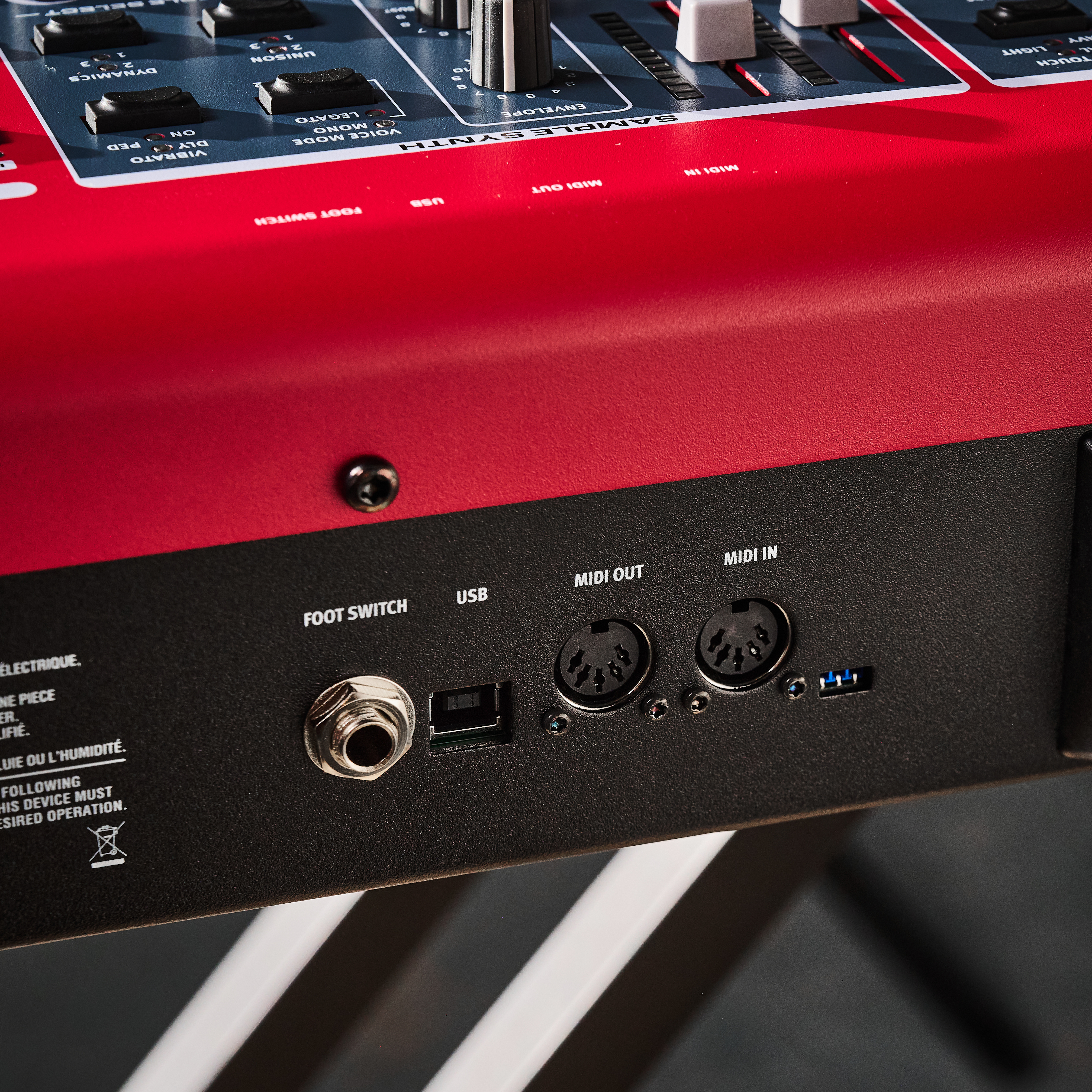
This latter technique, generated using the middle pedal, is fairly unique, sustaining notes that have already been played and held, while others remain unsustained. Also unique is the triple-pedal connection, which adopts a specific 5-pin Din design. You can also revert to the 1/4” jack pedals, for regular sustain, if you don’t need the triple effect!
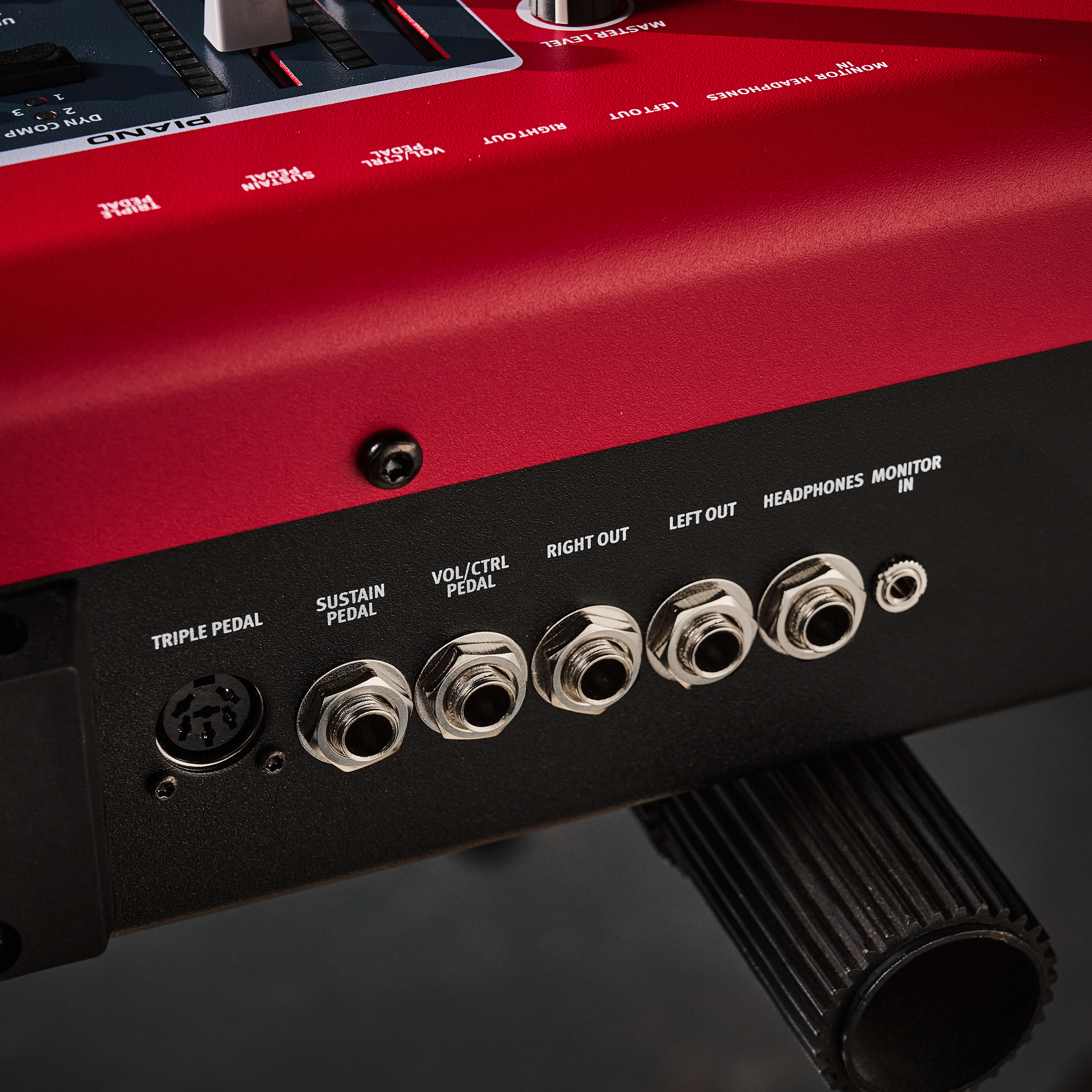
Pianos X2
Nord includes a substantial armoury of samples, which are gathered from its own library. This library has been in development for many years, and despite first inclination, many of the samples from yesteryear still hold their ground. Even so, Nord is keen to demonstrate its newer sample libraries, beginning with the White Grand, which is described as a semi-concert grand, presumably of around 7’0” in size. The full range of depth and detail is here. It’s got all of that Grand piano authority!
The samples are bolstered by an extensive effects section. In the case of the acoustic pianos, processing can be quite subtle, but in the realm of EPs, the processing can add depth and raw power to the already immersive sampling. The Stockholm EP9 sample is a case in point, captured from a 1976 Rhodes Mk1, providing a beautiful tradeoff between the sound of the tines and the gritty bottom-end that a Rhodes can provide.
Want all the hottest music and gear news, reviews, deals, features and more, direct to your inbox? Sign up here.
Each patch offers the ability to layer two piano sounds simultaneously. This means that you can easily build a patch consisting of both an acoustic and electric piano, which can then be blended using the fantastic new faders, for each layer. These are equipped with LEDs to guide your path, and demonstrate signal output. There are several inbuilt examples of this form of combo, but it’s so easy to build a patch yourself, the rapid results are just extraordinary.
As we are talking about samples here, there is a finite amount of sample memory available. On the Piano side, you can store up to 2GB onboard, which is more than enough. The most impressive pianos currently in the Nord arsenal, are available in numerous sample sizes, the most expansive of which is described as XL, and typically soaks up 200MB. The Stockholm Rhodes, on the other hand, only absorbs 100MB in its XL form, and there are many other keyboard iterations which take up substantially less, including some of the earlier Rhodes samples, which are unbelievably under 10MB.
Nord includes pretty much all the sounds you will need, but you can also update or offload those that you don’t require, via its librarian software, which also allows the updating of firmware.

To EP and beyond!
If a sound you require has pianistic qualities, you will find it here, and that includes acoustic pianos, (in grand and upright formations), felt pianos, electric pianos such as Rhodes and Wurly, and even their superb sample of the legendary Yamaha CP-80. There are also a number of Clavinets, and even a couple of Harpsichords, although any early music purists might gripe at playing a Harpsichord on a weighted action. You can’t get everything right!
The Piano section also boasts a considerable amount of control, relating to pianistic interaction. You can change the touch and feel, on the fly, with additional control of timbre, and specific brightness settings which relate to the piano type you are using. The Keyboard Touch adapts to the heaviness with which you play, while dynamic compression will limit the dynamic range of your playing too.
The new Unison mode allows three levels of subtle detune and thickening. Previously, this would have been achieved by detuning a second layer, so the net gain is much thicker textures, across both piano parts.
Nord has always paid particular attention to release samples, maintaining pianistic authenticity, and has also included the ability to add or defeat pedal noise, as heard on an acoustic piano. This ties in with the new triple-pedal, meaning that you hear pedal noise, whether you are playing notes or not! String resonance is also included as standard, meaning that if you hold notes on the keyboard, and re-attack the surrounding notes, there is a degree of interplay. It’s a nod towards what would normally happen on an acoustic, but not entirely realistic. It delivers a small re-attack of the held notes from the sample. It’s a difficult ask, from a sample, but it’s a tick in the right direction.
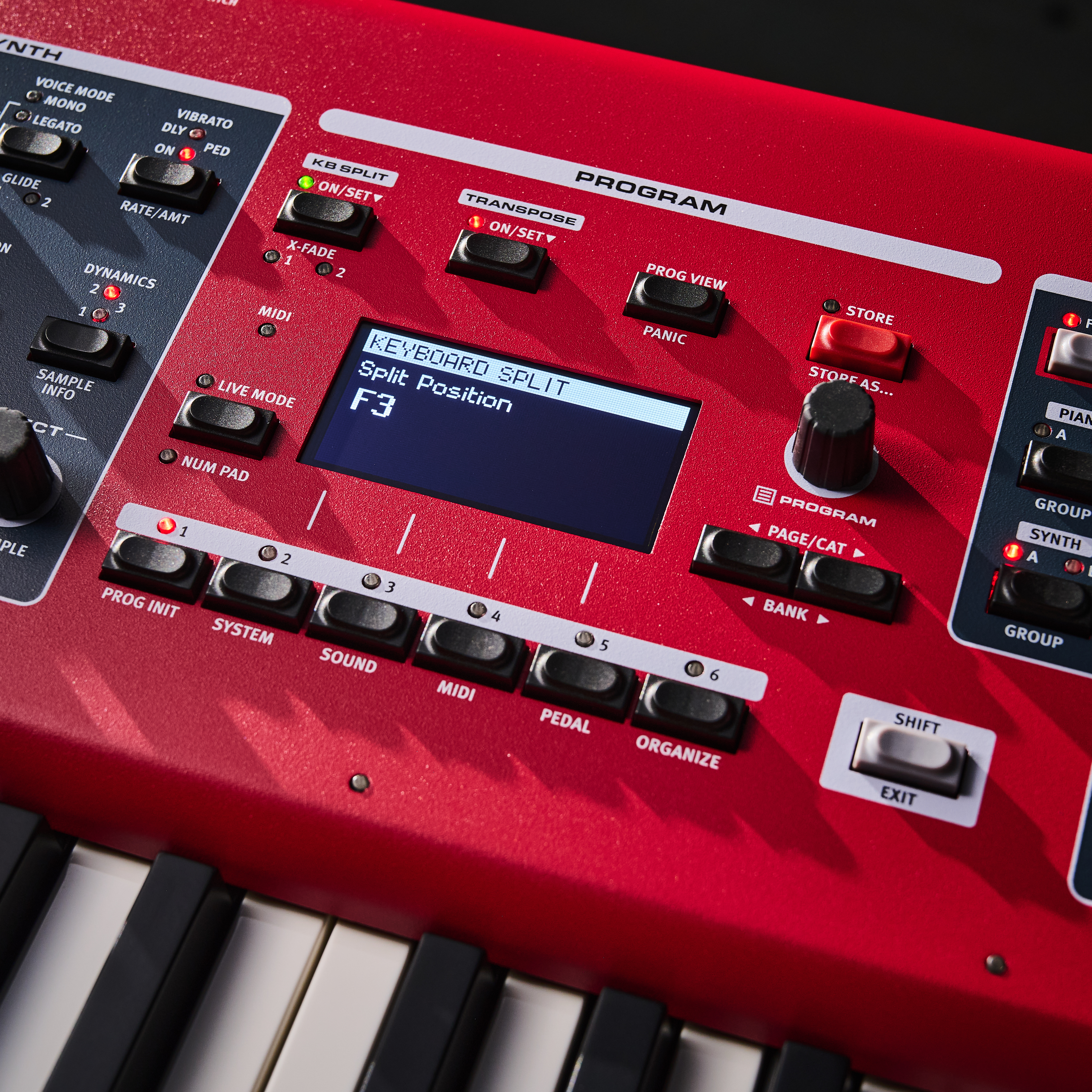
Synth section
Residing alongside the Piano section, is the synth section, which provides a very healthy collection of usable samples, designed to complement the pianos.
Nord has included 1GB of sample memory here, but once again, many of the sounds are very economic in their construction, meaning that you can include just about everything you will need onboard, and use their librarian software to offload those that you don’t.
Much like the Piano library, the Nord sample library is comprehensive, with orchestral instruments, which include string samples drawn from Spitfire Audio, brass, accordions, mellotrons, pipe organs, numerous forms of synth, choirs and tuned percussion. This is clearly designed to be adaptable, to suit the player and their musical style. The construct here is much like the Piano section, providing two layers. Thanks to the accompanying faders, it is really easy to fade up a string section behind a piano, or literally defeat a layer. One very useful feature allows the sound you are playing to be held, using the sustain pedal, while deactivating a layer. It’s a very musical feature, and one that is exceptionally useful in a live environment.
Of course, with a lack of pitch and mod sticks/wheels, it highlights a possible issue for synth soloing, but Nord does provide a Vibrato button, which can be employed, a little like a modulation wheel. Not a solution, just a workaround!
With a total of four layers to play with, it’s easy to build up patches that perform sensitively or provide an innate sense of power. You can split and zone layers, but true to form, Nord has stuck by its preset split locations, indicated by green LEDs above the keyboard. It’s not quite as flexible as most would like, but there is a bit of workaround using the cross-fade function, which gently blends from one split point to the next. It certainly takes the sting out of the split point, but you can obviously leave this cliff-edge in place, if that’s your preference.
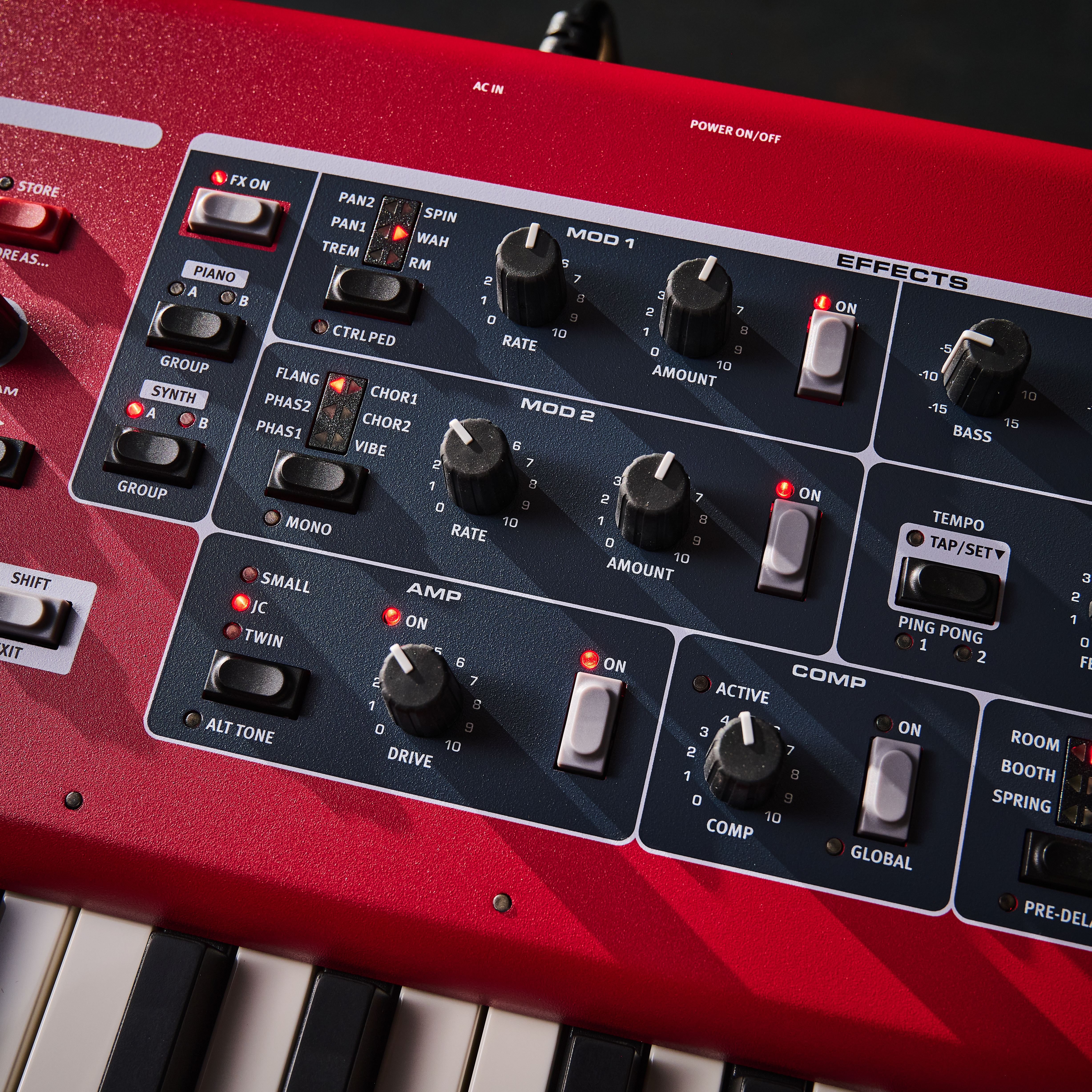
Patches and effects
In the centre of the panel, the crisp OLED display guides your way. Below this, Nord has included its six Live patch recall buttons, allowing you to place your favourites in a convenient location, for instant recall.
On the far right-hand side of the panel, we find a very extensive effects section. This includes forms of modulation, designed to accompany many of the pianos which are on board, with usual favourites such as global reverb. Importantly, for a keyboard of this kind, access to many of the settings is instant, allowing immediate tweaking in the live environment. Moreover, the effects are exceptionally impressive, right down to the basic tail of the reverb.

Verdict
This is a sizeable upgrade from the Piano 5, equipped with a number of new features which have migrated from other Nord devices. However, the big take-home is the overall playability of this wonderful keyboard. Once we had it set up on a stand (which is about the only thing which isn’t included) we simply got lost for hours in the enjoyment of playing. The choice of sounds, particularly on the pianistic side, are exemplary, but when you couple this with the keybed, it’s a stunning performer, which could threaten the crown of the much loved Stage (depending of course on whether you need the organ sounds!).
If you find yourself gigging, the Nord keyboard case (available separately) will help with carting around of a large keyboard, and you can of course downsize to 73-notes with no loss to the feel, other than the removal of several kilograms from the loading on your back!
Hands-on demos
nordkeyboards
Alternatives
Roland’s classic pianistic controller, with great action and SuperNATURAL Piano.
Read the full Roland RD-2000 EX review
The Vintage alternative, which excels for EPs and more.
Read more about Korg SV-2
Specifications
Price | 88-note £3,299 73-note £2,999 |
Key features | 88-note or 73-note Triple Sensor keybed, with grand weighted action OLED display Dual Piano and Synth layers 2GB Piano Memory/1GB Synth Memory Conventional MIDI and USB Stereo/Headphone output Monitor input Comprehensive Effects section |
Weight | 88-note – 19.2kg |
Contact |
Roland Schmidt is a professional programmer, sound designer and producer, who has worked in collaboration with a number of successful production teams over the last 25 years. He can also be found delivering regular and key-note lectures on the use of hardware/software synthesisers and production, at various higher educational institutions throughout the UK
You must confirm your public display name before commenting
Please logout and then login again, you will then be prompted to enter your display name.


